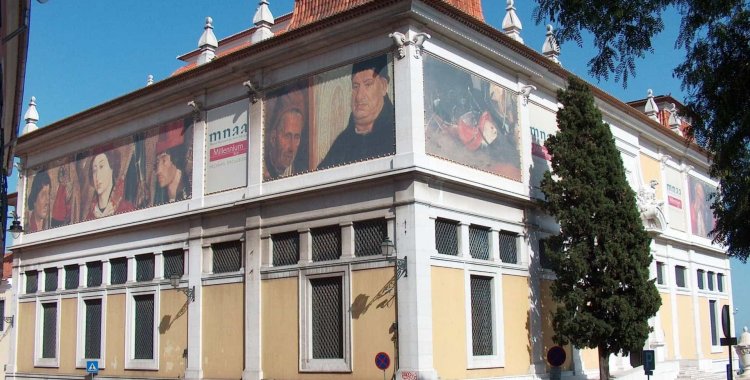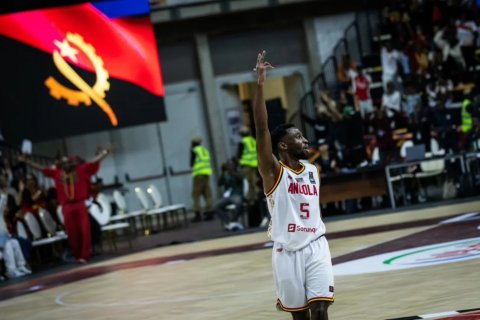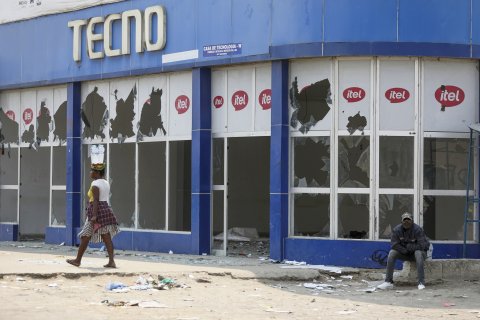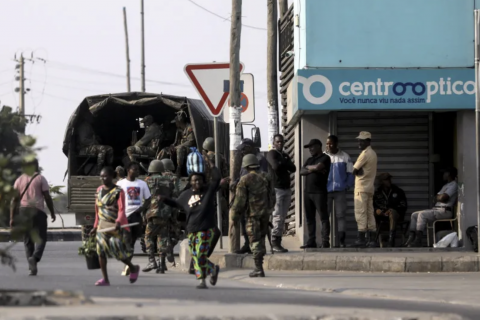"Boba Kana Muthu Wzela: It is Forbidden to Speak Here!" is the title of the new temporary exhibition at the National Museum of Ancient Art (MNAA), in Lisbon, which opens on Friday in the Sala dos Passos Perdidos, where it will remain until 9 January 2022.
The exhibition is part of a project by visual artist and researcher JRicardo Rodrigues, who uses photography in the field of art "as a means to reveal a very fragile memory of history, of the relationship with Africa", he explained to Lusa agency.
"I identified some works by African historians that reveal very little known facets of Portuguese citizens in relation to some historical figures, and their connection with Africa, for example the case of Marquês de Pombal", he said, regarding the research carried out in this area.
Born in Angola, JRicardo Rodrigues says he has always been close to African historians, who spoke to him of Portugal's relationship with some important figures in history, including Marquês de Pombal, a personality who "still divides Portuguese society in a way that very radical, because, on the one hand, it represents the Enlightenment, and, on the other, state terrorism."
Upon discovering this connection between Marquês de Pombal and Africa, "it was possible to start opening doors to another field that is not properly identified, Bairro do Mocambo, in Lisbon, a word of Angolan origin, African neighborhood with origins in the 16th century, probably even prior to this date, until it gained this form of neighborhood, which disappeared in the 19th century".
The former 16th-century neighborhood of Mocambo, now Madragoa, in the vicinity of which the MNAA came to settle in the 19th century, is the artist's focus for an exercise in imagination that proposes another look at the presence and African heritages in Portugal, more particularly in Lisbon.
Bringing together 11 works from the different series of the artistic project "Revealing Memory from Oblivion", which JRicardo Rodrigues started in 2010 as a visual essay on the Portuguese 18th century, the exhibition also dialogues with the European artistic tradition present in the MNAA's halls.
"It is the disappearance of this identity [of the African neighborhood] that I intend to return to through photography", the artist told Lusa, commenting that "there are gaps in information" about History, and therefore, his work "tried to imagine the that might have been" if the neighborhood hadn't disappeared.
In large-format photographic stagings, JRicardo Rodrigues reconfigures memory based on absence, crossing the past with contemporaneity, and questioning continuities and contrasts.
"Each one will draw their own conclusions, but the main point [of this work] is that our individual and collective memory is very fragile", he concludes.
The artist foresees that "it will certainly be a big surprise for many people, based on the exhibition and the information that complements it", with the parallel program, which includes conferences with historians, namely Carlos Mariano Manuel, author of the work "Angola: From before its creation by the Portuguese to the exodus of these for our creation", which will have an official launch at the Padrão dos Descobrimentos on the 29th of October.
The exhibition also addresses the languages spoken at the time, in the neighborhood, which expressed themselves with greater freedom and were frowned upon by the authorities: Umbundu, the original language of the neighborhood's name, and Kimbundu, used in the title of the exhibition.
Located outside the Fernandina fence, the Mocambo neighborhood was the place where a significant part of the African population of 16th-century Lisbon settled, although today little remains of that memory, unknown to most of Lisbon's inhabitants.
The very toponymy of the neighborhood, renamed Madragoa in the 19th century, no longer shows traces of this African presence, which has become increasingly a minority with the city's transformations and the greater settlement of other populations, indicates the MNAA.
The photographs are also in dialogue with the MNAA's collection, inspired by models of European painting from the 17th and 18th centuries, which the artist claims as references.
Born in Angola in 1964, JRicardo Rodrigues lives and works in the historic center of Lisbon, seeks to discover through the image the secrets of the city and the soul of its protagonists, and his projects merge photography into drawing and painting, presenting a radical approach, always in search of Surrealism.
The parallel program includes a conference, on Friday, at 5 pm, in the MNAA auditorium, entitled "The creation of the colony of Angola and the Battle of Ambuíla", by professor Carlos Mariano Manuel, with free admission.
Created in 1884, the MNAA houses the most relevant public collection in the country in the areas of painting, sculpture, decorative arts – Portuguese, European and Expansion, from the Middle Ages to the 19th century, including the largest number of works classified as 'treasures nationals', as well as the largest collection of Portuguese furniture.
The exhibition "Boba Kana Muthu Wzela: It is Forbidden to Speak Here!" it opens on Friday, at 6.30 pm, at the National Museum of Ancient Art, in Lisbon.







